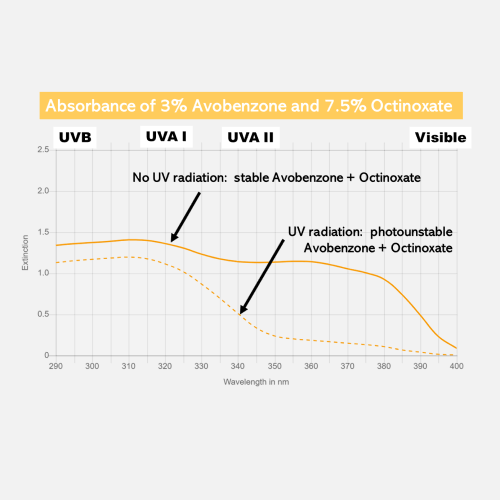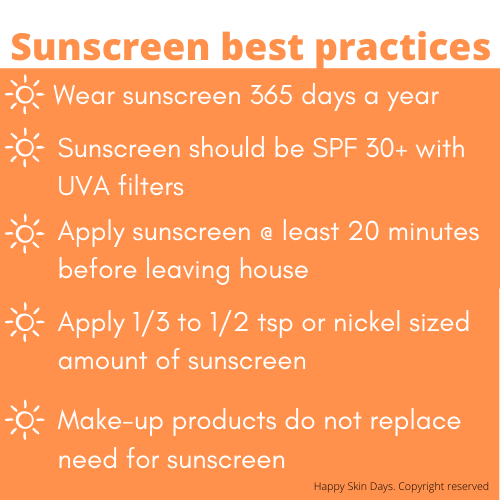Introduction
Occasionally, I will come across a sunscreen that satisfies all these conditions:
- Hideously expensive
- Well-known and popular brand
- Terrible formulation, resulting in poor protection against UVA and UVB radiation.
Dermalogica’s sunscreen is one such product: its 3 times the price of Bioderma; is made by a popular brand and is a rubbish sunscreen.
Just to remind you, we want sunscreen to protect against the deleterious effects of both UVA and UVB radiation as they’ve both been implicated in causing (e.g.) skin cancer and photoaging.
(See What Damage is Sunscreen Trying to Prevent? for further details).

Problematic combination of filters
At the brand’s website, the filters and their quantities are very helpfully listed out: 7.5% Octinoxate (the UVB filter) and 3% Avobenzone (the UVA filter). (Click on this LINK)
Studies show that combining Octinoxate with Avobenzone reduces the efficacy of BOTH sunscreen filters.
I don’t normally like showing graphs, but these are the results of a sunscreen simulator mimicking the filters above.

The solid orange line shows the stable formulation when there is no UV radiation.
The dotted orange line shows what happens when the sunscreen is exposed to UV radiation (1 MED). As you can see the filters are photo-unstable. They essentially breakdown providing the wearer with extremely poor protection against UVA and UVB radiation.
Closing
I believe that if you are going to spend over INR 5,000+ on a sunscreen, the first thing that sunscreen should not do is start to breakdown as soon as you put it on.
This may be an excellent moisturiser but like Pond’s whitening cream, which also combines Avobenzone and Octinoxate, its a utility as a sunscreen is at best questionable.
I will leave you with sunscreen best practices! Drop me a line if you have any questions at email@happyskindays.com

See also
Make-up products are not a replacement for good old sunscreen
